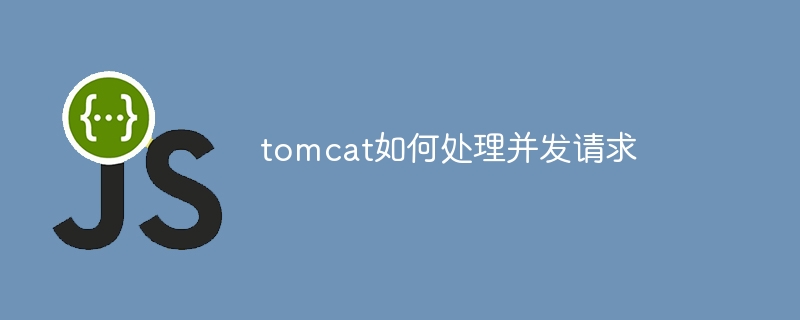
Tomcat uses multi-threaded architecture, connection pools, request queues, worker threads and asynchronous I/O to handle concurrent requests. It creates new threads to process requests in parallel, uses connection pools to reduce overhead, and uses request queues to cache requests. , allocate worker threads to process requests, and release worker threads during I/O operations to ensure efficient processing of massive concurrent requests and maintain high performance and scalability.

How Tomcat handles concurrent requests
Tomcat is a popular Java web application server that can handle Large number of concurrent requests. Here's how it handles concurrent requests:
Multi-threading
Tomcat uses a multi-threaded architecture to handle concurrent requests. When a request arrives, it creates a new thread to handle the request. This way, multiple requests can be processed simultaneously without waiting for a single thread to complete.
Connection pool
Tomcat uses a connection pool to manage connections to the database. When a request needs to access the database, it obtains an available connection from the connection pool. This helps reduce the overhead of creating and destroying connections and improves performance.
Request Queue
Sometimes, the number of concurrent requests may exceed the number of threads available to Tomcat. In this case, Tomcat will put the request in the request queue. When a thread becomes available, it gets the next request from the queue and starts processing it.
Worker thread
Each worker thread in Tomcat is responsible for processing a request. The worker thread gets the request from the request queue and performs the necessary operations to handle the request. These operations may include accessing databases, generating dynamic pages, or processing form data.
Asynchronous I/O
Tomcat supports asynchronous I/O, which allows it to release worker threads while processing requests. When a worker thread needs to perform I/O operations (such as reading a file or writing to a database), it can release the worker thread and let other worker threads handle other requests. Once the I/O operation is completed, Tomcat notifies the worker thread to continue processing the request.
By using these technologies, Tomcat can efficiently handle large numbers of concurrent requests while maintaining high performance and scalability.
The above is the detailed content of How tomcat handles concurrent requests. For more information, please follow other related articles on the PHP Chinese website!
 How to configure Tomcat environment variables
How to configure Tomcat environment variables
 How to integrate idea with Tomcat
How to integrate idea with Tomcat
 How to view Tomcat source code
How to view Tomcat source code
 What are the common tomcat vulnerabilities?
What are the common tomcat vulnerabilities?
 How to solve garbled tomcat logs
How to solve garbled tomcat logs
 What are the differences between weblogic and tomcat
What are the differences between weblogic and tomcat
 What are the differences between tomcat and nginx
What are the differences between tomcat and nginx
 How to solve tomcat startup crash
How to solve tomcat startup crash




